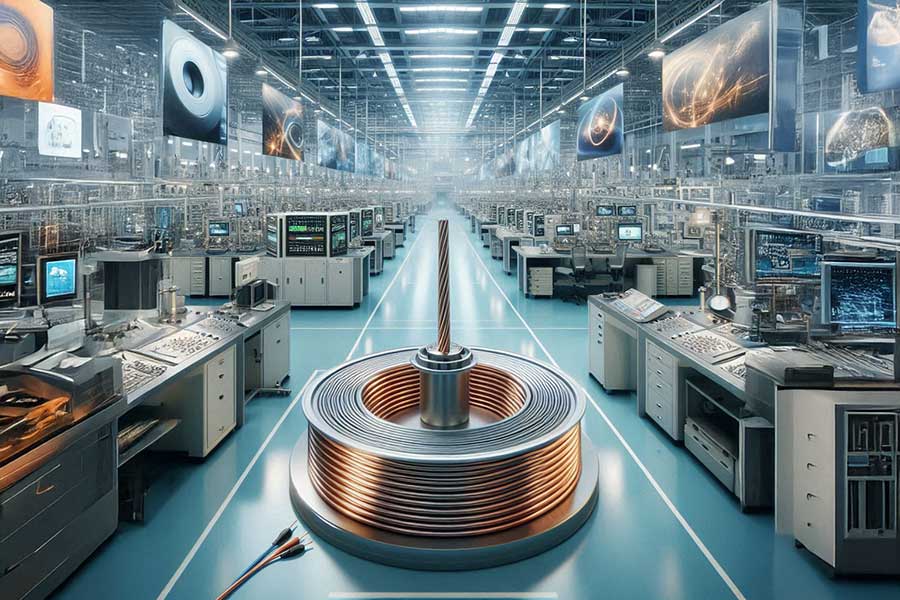
Sound is an indispensable part of our lives. Whether we're listening to music, watching movies, or playing games, a quality audio experience is important to all of us. One of the elements that form the basis of this experience is the audio cables. So, what should a good audio cable manufacturer look like? With what technical competencies should manufacturing be carried out and what kind of features should the production facility have? Here are the answers to these questions:
1. Technical Competencies in audio cable manufacturing:
- Material Knowledge and Expertise in audio cable manufacturing: A good manufacturer should have in-depth knowledge of conductive materials (copper, silver, gold, etc.), insulation materials (PVC, PE, Teflon, etc.), shielding materials (copper braid, aluminum foil, etc.), and connectors. They should know the electrical and mechanical properties of different materials, their effects on sound transmission and their compatibility with each other. For example, one should understand the advantages of high-purity copper in signal transduction, the high-frequency performance of Teflon insulation, and the effectiveness of copper braided shielding in blocking electromagnetic interference.
- Knowledge of Electrical and Electronics Engineering: Must have a good command of basic electrical and electronic concepts such as signal transmission, impedance, capacitance, inductance, resistance, frequency response, noise and interference. He should know how the cable design affects these parameters and how he can optimize the sound quality.
- Measurement and Test Techniques: It must have appropriate test equipment and techniques to accurately measure the performance of the cables produced. This equipment may include oscilloscopes, signal generators, spectrum analyzers, impedance meters, and other specialized test instruments. It must be able to precisely measure the frequency response, signal loss, noise level, and other electrical characteristics of the cables.
- Compliance with Standards: It must produce in accordance with international standards (e.g., IEC, AES) and industry standards. These standards guarantee the safety, performance and quality of cables.
- R&D and Innovation: Audio cable manufacturers must continuously invest in R&D and develop new materials, technologies and production methods. It should closely follow the developments in voice technologies and continuously improve its products.
2.Cable manufacturing plant features:
- Modern and Technological Equipment: It should have modern and technological equipment for sensitive production processes. These equipment may include cable drawing machines, insulation machines, shielding machines, soldering stations, connector assembly machines, and testing equipment.
- Controlled Production Environment: The production environment should be a clean and tidy area where factors such as dust, humidity and temperature are kept under control. This minimizes the impact of environmental factors that can affect the quality and consistency of the cables.
- Quality Control Processes: Strict quality control processes must be implemented at every stage of production (material input, production process, final product control). This prevents defective products from being placed on the market and ensures customer satisfaction.
- Environmental Awareness: Environmentally friendly production methods should be used and necessary precautions should be taken in waste management. It should take care to use sustainable materials and aim to minimize environmental impact.
- Experienced and Trained Personnel: The personnel involved in the production process must be experienced and trained in cable production. This is critical for quality and error-free production.
Summarize:
A good audio cable manufacturer must have technical competencies such as knowledge of materials, knowledge of electrical and electronic engineering, measurement and testing techniques, compliance with standards, and R&D capabilities. In addition, it should have a production facility with modern and technological equipment, a controlled production environment, strict quality control processes, environmental awareness and experienced personnel. Manufacturers with these features can produce high-quality and reliable audio cables and provide the best audio experience to their customers.
In light of this information, when buying an audio cable, it is important to pay attention not only to its price, but also to the technical competencies of its manufacturer and the characteristics of the production facility. A good quality cable can significantly impact the performance of your audio system and may be a better investment in the long run.
